 Introduction: Starting a virtual, online business in the United Kingdom is an exciting endeavour that offers numerous benefits, such as reduced overhead costs and a potentially wider customer base. However, just like any business, an online venture comes with its own set of risks and uncertainties. In this article, we will explore the types of insurance needed for an online business in the UK, compare them to brick-and-mortar establishments, and provide insights into conducting a comprehensive risk assessment for your new virtual business.
Introduction: Starting a virtual, online business in the United Kingdom is an exciting endeavour that offers numerous benefits, such as reduced overhead costs and a potentially wider customer base. However, just like any business, an online venture comes with its own set of risks and uncertainties. In this article, we will explore the types of insurance needed for an online business in the UK, compare them to brick-and-mortar establishments, and provide insights into conducting a comprehensive risk assessment for your new virtual business.
- Insurance Needs for Your Online Business: When setting up an online business in the UK, it’s crucial to consider various types of insurance to protect your venture from potential risks. The following are some key insurance policies to consider:
- Cyber Liability Insurance: Online businesses are susceptible to cyber threats such as data breaches, hacking, and identity theft. Cyber liability insurance helps cover the costs associated with these incidents, including legal fees, data recovery, and customer notifications.
- Professional Indemnity Insurance: This policy is essential if your online business provides services or advice. It protects you from claims of negligence, errors, or omissions that may arise from your professional activities.
- Public and Product Liability Insurance: Even without a physical storefront, your virtual business can still face liability claims from customers who may be harmed by your products or services. Public and product liability insurance provides coverage for bodily injury or property damage claims.
- Business Interruption Insurance: In the event of a disruption that affects your ability to operate your online business, such as a cyber attack or technical failure, business interruption insurance can help cover lost income and ongoing expenses.
- Contents and Equipment Insurance: While your business may not have a physical location, you likely have valuable digital assets, equipment, and tools that need protection. Contents and equipment insurance safeguards your business against losses due to theft, fire, or other unforeseen events.
- Comparing Insurance Needs: Online Shop vs. Brick-and-Mortar Shop or Office: The insurance needs of an online shop differ from those of a brick-and-mortar shop or office due to the unique risks associated with each type of business:
- Property Insurance: Brick-and-mortar businesses typically require property insurance to cover their physical assets, such as the building, inventory, and equipment. In contrast, online businesses focus more on digital assets and may require specialized coverage for website content and data.
- Location-Related Coverage: Physical businesses may need coverage for slip-and-fall accidents or property damage occurring on their premises, which is less relevant to online businesses.
- Cyber Liability: While both online and brick-and-mortar businesses face cyber risks, online businesses are more vulnerable to data breaches and online attacks. Cyber liability insurance is a critical consideration for virtual businesses.
- Public Liability: Physical businesses face greater exposure to public liability claims, especially if customers visit their premises. Online businesses, however, can still face public liability claims related to the products they sell or services they provide.
- Business Interruption: Both types of businesses can benefit from business interruption insurance, but the triggers for interruption differ. For online businesses, interruptions could arise from technical issues or cyber incidents, while brick-and-mortar businesses may be affected by events like fires or floods.
III. Conducting a Risk Assessment for Your Online Business: Performing a comprehensive risk assessment is vital to identify potential threats and develop strategies to mitigate them. Follow these steps to assess the risks for your new virtual business:
- Identify Risks: List potential risks, such as cyber attacks, supply chain disruptions, competition, legal and regulatory challenges, and changes in customer behavior.
- Assess Impact and Likelihood: Evaluate the potential impact of each risk on your business and determine the likelihood of its occurrence. Rank risks based on severity and probability.
- Develop Mitigation Strategies: For each identified risk, create strategies to minimize its impact or likelihood. This could include implementing cybersecurity measures, diversifying suppliers, or creating contingency plans.
- Insurance Consideration: Determine which risks can be effectively managed through insurance. Research and select appropriate insurance policies based on your risk assessment findings.
- Continuous Review: Regularly review and update your risk assessment as your business evolves and new risks emerge. Adapt your mitigation strategies and insurance coverage accordingly.
Conclusion: Setting up a virtual, online business in the United Kingdom offers numerous opportunities, but it also comes with its fair share of risks. By carefully considering the types of insurance needed, understanding the differences between online and brick-and-mortar businesses, and conducting a thorough risk assessment, you can better protect your virtual business and position it for long-term success. Remember that each business is unique, so tailor your insurance and risk assessment strategies to suit your specific circumstances and industry.







